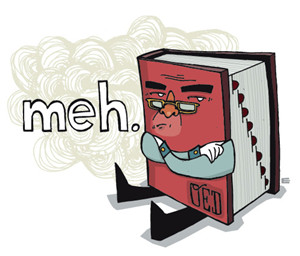
INTRO: This week VOA Wordmasters Rosanne Skirble and Avi Arditti look in on a teacher who takes an unusual approach to teaching English as a second language.
TAPE CUT - SFX OF SCHOOL CORRIDOR
RS: It's the beginning of the day at Blair High School in Silver Spring, Maryland, just outside Washington. Students gather in small groups to chat with friends on the way to class. In blue jeans and T-shirts, backpacks over their shoulders, these students look like typical American teenagers.
AA: What's not so typical about Blair High School is the way it sounds. The school has almost three-thousand students. One-third of them speak English as a second language. They come from 43 countries and speak more than thirty languages.
TAPE: SFX OF CLASSROOM
RS: On the third floor one classroom is tucked away in a quiet space at the end of a corridor. The class has just twelve students.
It's so small because these students have special needs beyond those of other students of English as a second language.
AA: They come from Somalia, Liberia, El Salvador.
Their lives have been traumatized by war. Some have missed years of school. These students come to Blair illiterate both in English and their native language.
RS: Cindy Carlson teaches this special class. And what's different about how she teaches the kids to read, write and speak English is that she uses the science curriculum. Today's lesson is to identify coral.
TAPE CUT ONE: CINDY CARLSON SPEAKING TO CLASS
"You guys if you want to look up here we have a chart of the coral reef. We have the deep water here. We have the crest here. We have a little lagoon here. Remember we talked about this yesterday. If you look down here in the front, some coral likes to grow where it is deeper water and some like to grow where it's shallow water. I'm going to read this and you put the coral on your chart where it goes, OK?."
AA: As Cindy Carlson reads the description, her students are busy at work. They color, cut and paste different examples of coral onto a blank chart of the ocean. Other activities then reinforce these concepts.
RS: The students compare coral from photographs in books and images on a laser disc. They pass samples of coral around the room. Cindy Carlson says repetition is the key to success in learning language.
TAPE CUT TWO: CINDY CARLSON/SKIRBLE
CINDY CARLSON: "Not only just repetition, but repeating it in different forms. If you can do something orally, that means the kids hear something. If you can do something where they can read about it, and if you can do something where they can hold it and manipulate it and then discuss it, and see pictures of it — the more different kinds of ways you can approach the same thing, the better."
RS: "Why is it so difficult to teach science to learners of English as a Foreign or Second Language?"
CINDY CARLSON: "It's difficult because it is abstract. We're talking about something that is difficult for anyone to learn, and then on top of that there is the language. Of course the vocabulary is a problem, but there are also different kinds of vocabulary, the process vocabulary and the content vocabulary.
The content is, for example, the names of the coral or the word 'coral' and the word 'deep' and 'shallow' and things like that. But there are other kinds of words in science that are really important. Those are the process vocabulary."
AA: Cindy Carlson says those are the words that describe the scientific method, or the procedure scientists apply to their work.
TAPE CUT THREE: CINDY CARLSON
"So, what I try to do is use simple, basic language, but at the same time give them experience with the more complicated scientific language. When they are doing experiments they have to create hypotheses.
"They have to do the procedure. They have to decide what are the conclusions. The words that I use to tell them what to do are very difficult for them. So, for example when I talk about the hypothesis, I also talk about their opinion. So, I say, 'put your hypothesis here. Remember, the hypothesis is what you think is going to happen.' Over and over I associate a common word that they know with the complicated process word."
RS: But even some common words have a totally different meaning in the language of science.
TAPE CUT FOUR: CINDY CARLSON
"For example, (take) the word culture. We talk about what is our culture — the American culture, Hispanic culture, Asian culture. In science, culture is where you grow your bacteria in a little dish. So, when you start talking about culture, the kids have no idea of what you are talking about because it is the same word that we use normally use in a different way."
TAPE: SFX — CLASSROOM SOUNDS
AA: Cindy Carlson sees no reason her students at Blair High School should have to learn English first, then science.
TAPE CUT FIVE: CINDY CARLSON
"I think the kids have a right to the same quality education that the other students have. They have a right to learn the concepts the other students are learning, but the challenge is how to get those concepts across to them, given their lack of schooling and lack of English."
RS: When Cindy Carlson is not teaching, she is writing her dissertation for a doctorate in education. Her topic: Teaching English as a second language through science.
AA: Experimenting with American English? Let us know if you've got any questions. Our e-mail address isword@voa.gov, or send your letters to VOA Wordmaster, Washington, DC 20237 USA.
RS: With Avi Arditti, I'm Rosanne Skirble.
MUSIC: "Mysteries of Science"/Jeanie Stahl
词汇点津:
今天的《词汇大师》讨论了Blair High School的一个实际问题。这所学校有3000名学生,其中三分之一是英语非母语的学生。甚至在这所学校中有一个12人组成的小班,单独授课,因为这12个人来自索
马里,只有几个人会说英语。
在教学过程中,老师发现,英语非母语的学生在学习science学科时常常遇到麻烦。因为,science方面的知识都比较抽象,加之有大量的科学名词要记忆,难度就大了。因此他们特意用science curriculum来进行教学。他们让学生们通过复述,和多种不同形式的复述方式来增强对知识的把握。
所以老师正努力做到用simple, basic 的语言来引入复杂的科学名词,并引导学生们自己得出结论,以加深印象。












